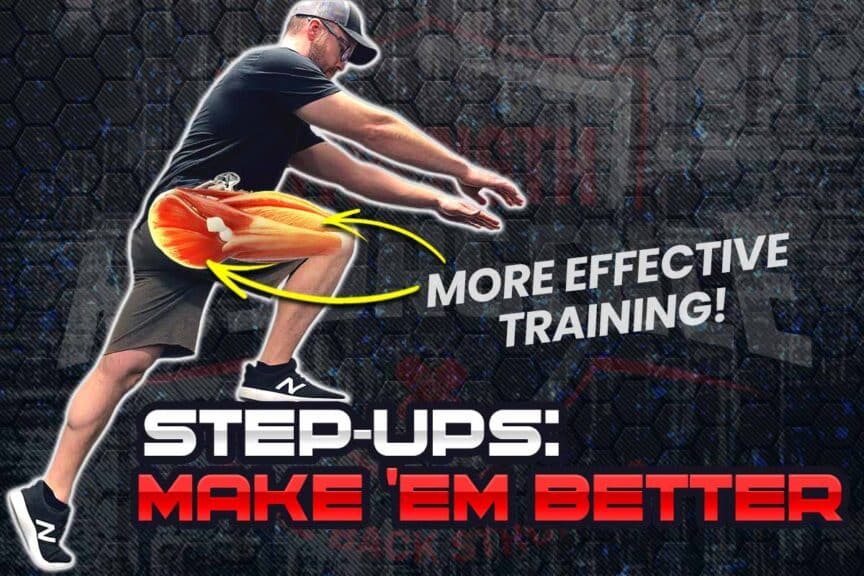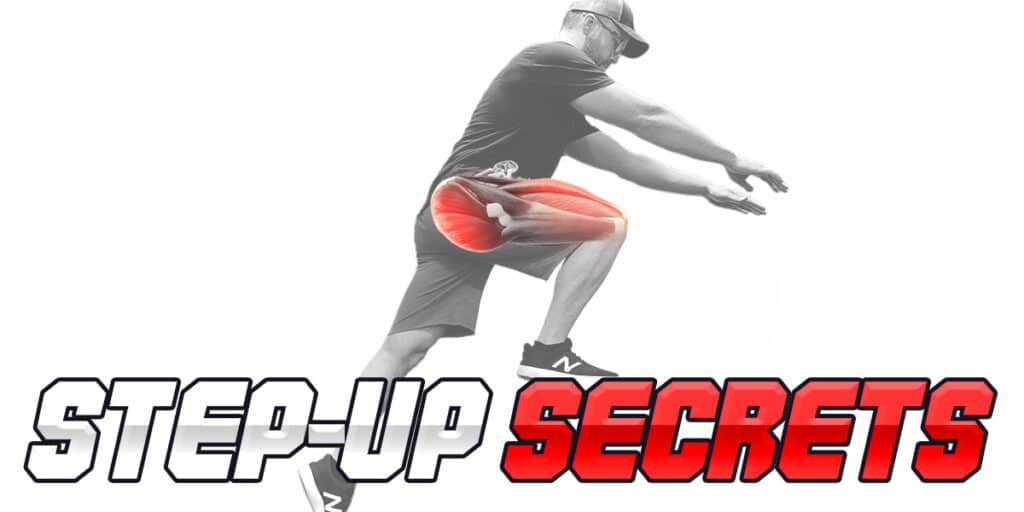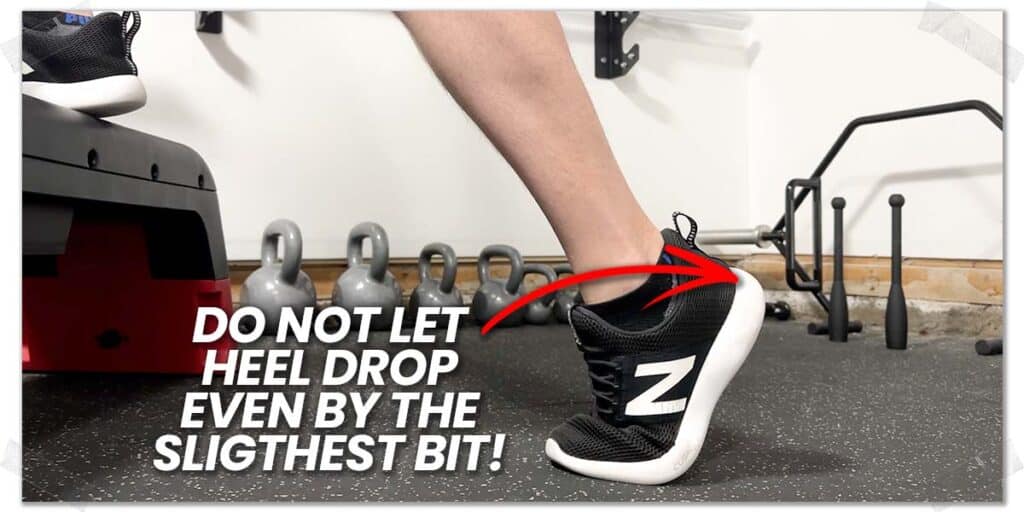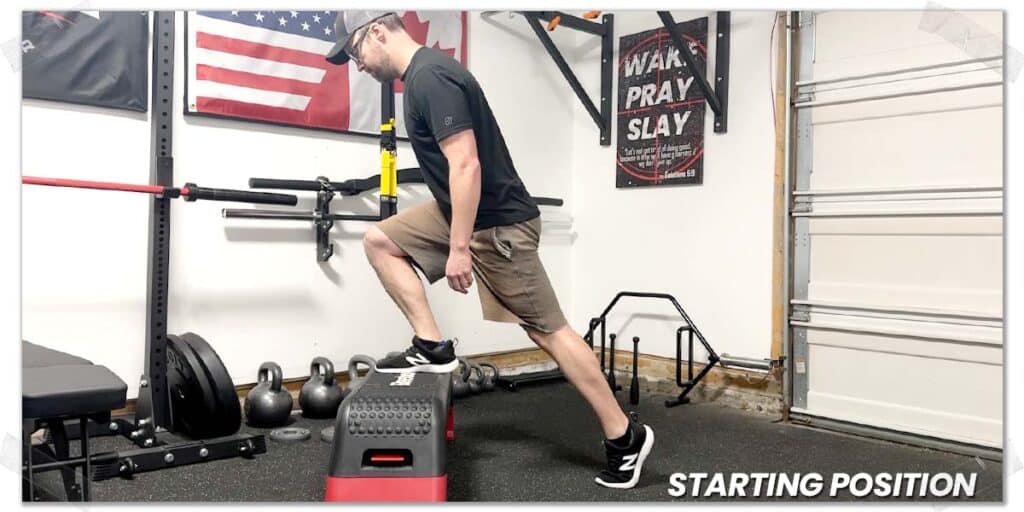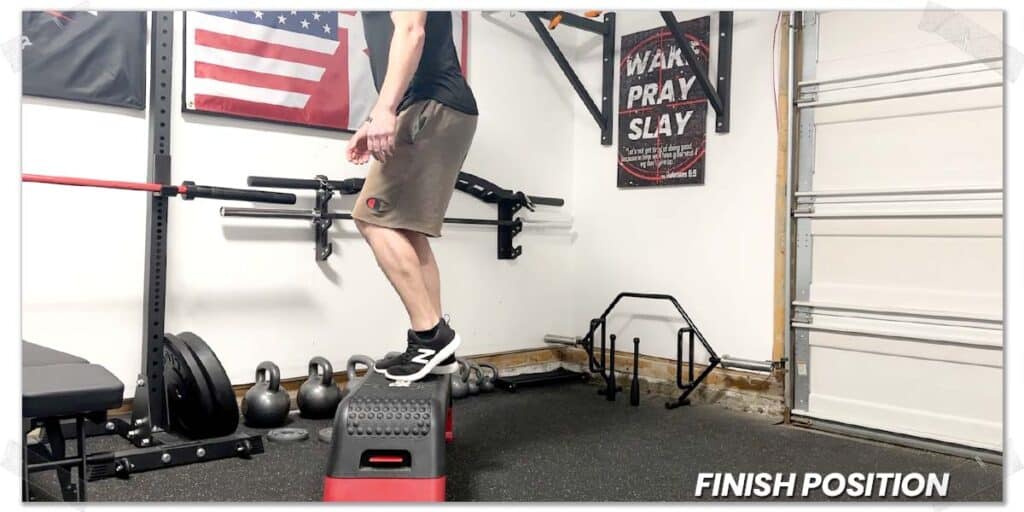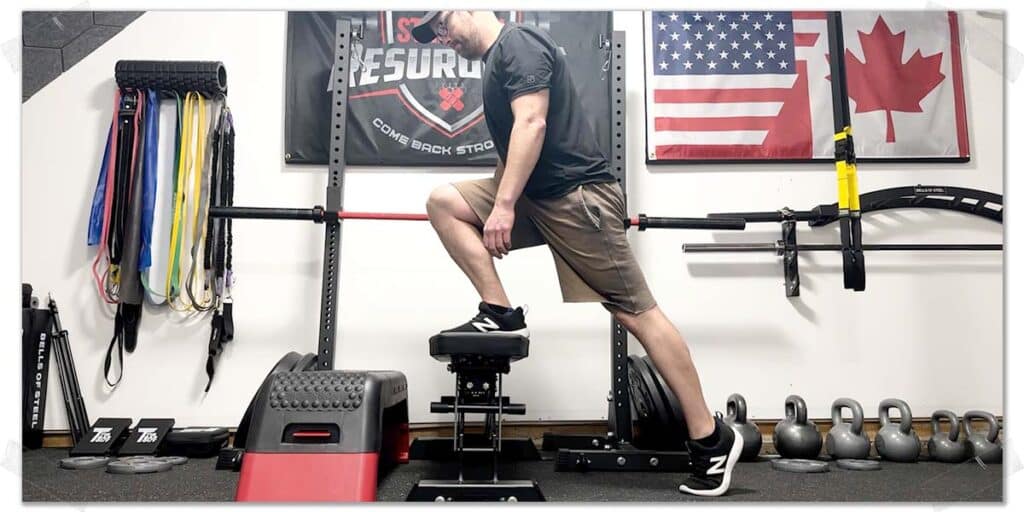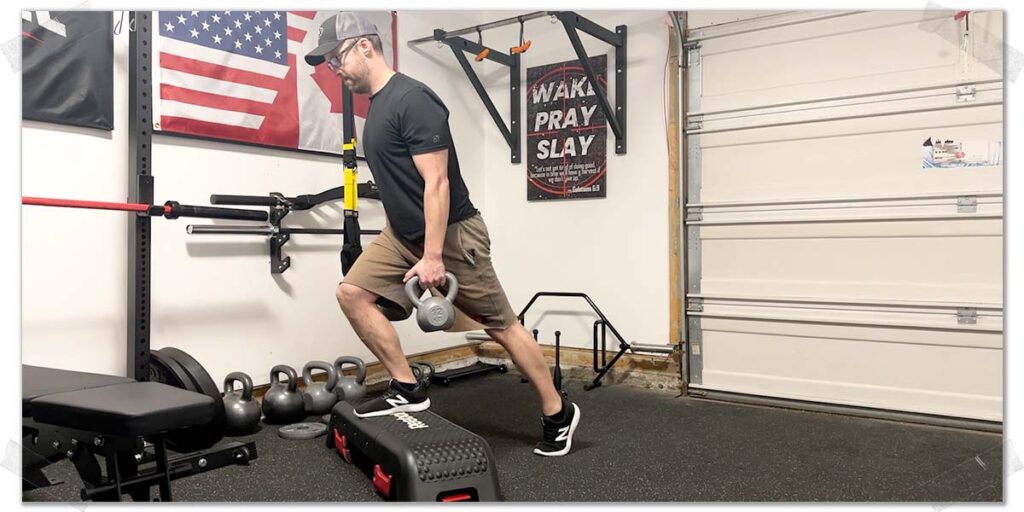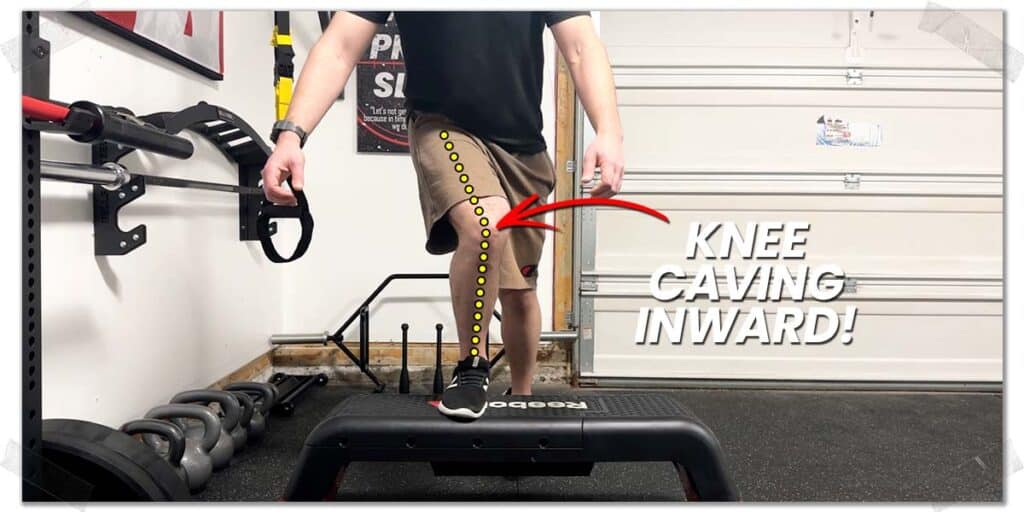Step-ups are an age-old exercise that can help build a seriously stronger lower body. But what if you could instantly make them immensely more effective with only two incredibly small changes. Wouldn’t that be worth considering?
I’m about to run you through how you can do this without:
- Increasing the weight you’re holding onto
- Increasing the height of the step
- Increasing the number of sets or repetitions
That’s right, you’re about to learn how to build bigger, stronger, and more sculped leg muscles without doing any of the above.
Sound too good to be true? Keep reading, and I’ll show you that it’s not snake oil; it’s just simple biomechanics and physiology that geeks like me love to share with individuals looking to build a stronger and more injury-resilient body.
So, get ready because these small changes will force your leg muscles to work much, much harder, making them light up like a Christmas tree.
How these changes work
To take your leg strength to the next level when performing step-ups, we’re going to take advantage of human physiology and do two things with the upcoming exercise. Now, I don’t want to bog you down with the specific physiology at play here, so I won’t go into geeky depths with this stuff. Just know that, ultimately, it all comes down to two phenomena that take place within that body that we need to manipulate:
- Muscle pre-load
- Eliminating counter-movement
You’ll see what I mean in just a second.
First, let’s take a look at a traditional step-up. It’s an outstanding exercise, and there’s nothing wrong with it, per se; it will challenge your quadriceps muscles and your gluteal muscles as they are forced to contract to bring you up onto the step. So this is all fine and good, but we can absolutely make this standard movement much more effective.
But to do this, we need to understand why the traditional step-up isn’t as effective as it otherwise could be (assuming you’re performing the exercise to build a stronger set of legs).
As humans, we often subconsciously find ways to make movement more efficient and easier to complete. In everyday life, this is indeed a very good thing. From an evolutionary perspective, movement efficiency is essential.
But if we’re deliberately trying to challenge our muscles in ways that force them to adapt by overcoming more physically demanding movement, taking out efficiency is often the best way to go, as this will pick on the muscles to a significantly greater extent.
“If we knock out counter-movement, we then significantly change how hard the muscles work when performing the step-up exercise.”
Traditional step-ups often involve a subtle but intensity-reducing movement known as counter-movement, which basically means that the body briefly generates momentum to help wind up and propel the body into the upcoming movement.
If we knock out this counter-movement, we then significantly change how hard the muscles work when performing the step-up exercise. I’ll show you how to do that in just one moment.
But I’m not stopping here because we’re also going to put some muscle pre-load into the equation, which will only pick on the muscles even more.
Oooh, this is going to get good!
Related article: The BEST Lunge You’re Not Doing (Don’t Miss Out on THESE Benefits!)
Make it Better: Changing the traditional step-up
Here’s how you’re going to go about doing all of this.
Take a traditional step and place one leg up on top. Next, shift your body weight forward until around 90% or more of your weight is loaded up on your front leg.
And here’s where it’s going to get interesting.
Now, lift the heel of your back foot as high as possible so that only the ball of your foot is on the ground. Essentially, you can think of your back leg as a kickstand; it’s just there to keep you from falling over.
Now, this is the critical part of the exercise. Holding this position for about two seconds, then — and this is crucial — without letting your heel drop down even one millimeter, push yourself up onto the step.
Holding this starting position for a couple of seconds will force your hip and thigh muscles on your front leg to contract and remain in a loaded state before you initiate the step-up. This makes the actual step-up process much more challenging to complete since your front-leg muscles have already endured a couple of seconds of contraction before you commence the step-up itself.
If done correctly, between eliminating the counter-movement and pre-loading your front leg, you’ll feel your quadriceps muscles and gluteal muscles have to contract way more aggressively than with the traditional step-up in order to get you up onto the step.
But you’re not done yet. There’s one more thing we need to ensure you execute correctly. But first, a small request:
I want to let you know that I’m honoured and feel blessed with the opportunity to share my knowledge and expertise in ways that help others live stronger lives, and if you think it’s cool what I’m doing, please consider sharing this post with any friends or loved ones you feel it may benefit. My passion in life is to help others learn the science and art of coming back stronger from injuries and building a stronger, healthier body.
Eccentric Control: Maximizing Strength Gains
Once you’ve reached the top portion of the step-up, you’ll then need to lower yourself back down to the starting position.
This should be done in a slow, controlled manner, which will continue to pick on your leg muscles, allowing for greater exercise benefit.
Your goal is to return to the starting position so that the ball of your foot rests on the ground, just like in the starting position. Hold this position for a couple of seconds, then perform another repetition and repeat the process.
I would imagine by now, you can see how your quadriceps and gluteal muscles (hip muscles) will get hammered over the next handful of repetitions.
Of course, you can modify this in ways to suit your needs and abilities. For example, you can take a breather at the top or bottom of each rep before starting the next one, or you can even put a leg drive into the step-up, which will take things up another notch. It all comes down to your needs.
And, you can, of course, hold onto more weight, increase the step height, or any combination of the two. Just find what works best for you.
Bonus content: Step-ups for injury recovery
As some additional helpful insight, let’s talk about why I often prescribe this exercise to many of the athletes I work with and rehab from lower extremity injuries.
In the later stages of rehab, it’s often essential that I find ways to ensure my athletes have not only adequate lower body strength but also proper movement control (known as motor control) when executing movements that require the entire lower extremity to move and function properly.
I could go into a world of detail about this within this article, but ultimately, what’s important to know here is simply that weakness and other issues in the hip and thigh can lead to poor movement control and function within the knee, which is often the case after recovering from injury.
The slow but demanding effort required to complete the particular style of step-up I’ve discussed in this article can be an outstanding way for athletes to become aware of and control their knee positioning while working to regain strength and endurance within the leg.
So, if you try this exercise for yourself, tune into your knee position and ensure that it doesn’t collapse inwards or roll around on you throughout the movement. If it does, it may mean that you need to improve the strength of your hip, which controls your thigh and subsequent knee position or become more mindful of your knee position when performing lower-body exercises.
Related Article: Bulgarian Split Squat Benefits (Are You Missing Out?) | Make Gains!
Final thoughts
Now, if you thought the concepts in this article were cool, I’ve got other helpful articles here on this site following this same format where you can take traditional exercises and tweak them in ways that light up your lower body like you wouldn’t believe.
So check out any of the articles listed above if you want more efficient and effective ways to develop a stronger, more injury-resistant lower body.

Hi! I’m Jim Wittstrom, PT, DPT, CSCS, Pn1.
I am a physical therapist who is passionate about all things pertaining to strength & conditioning, human movement, injury prevention and rehabilitation. I created StrengthResurgence.com in order to help others become stronger and healthier. I also love helping aspiring students and therapists fulfill their dreams of becoming successful in school and within their clinical PT practice. Thanks for checking out my site!

